Samsung QE65S90C Review
Samsung's step-down OLED is both hit and miss
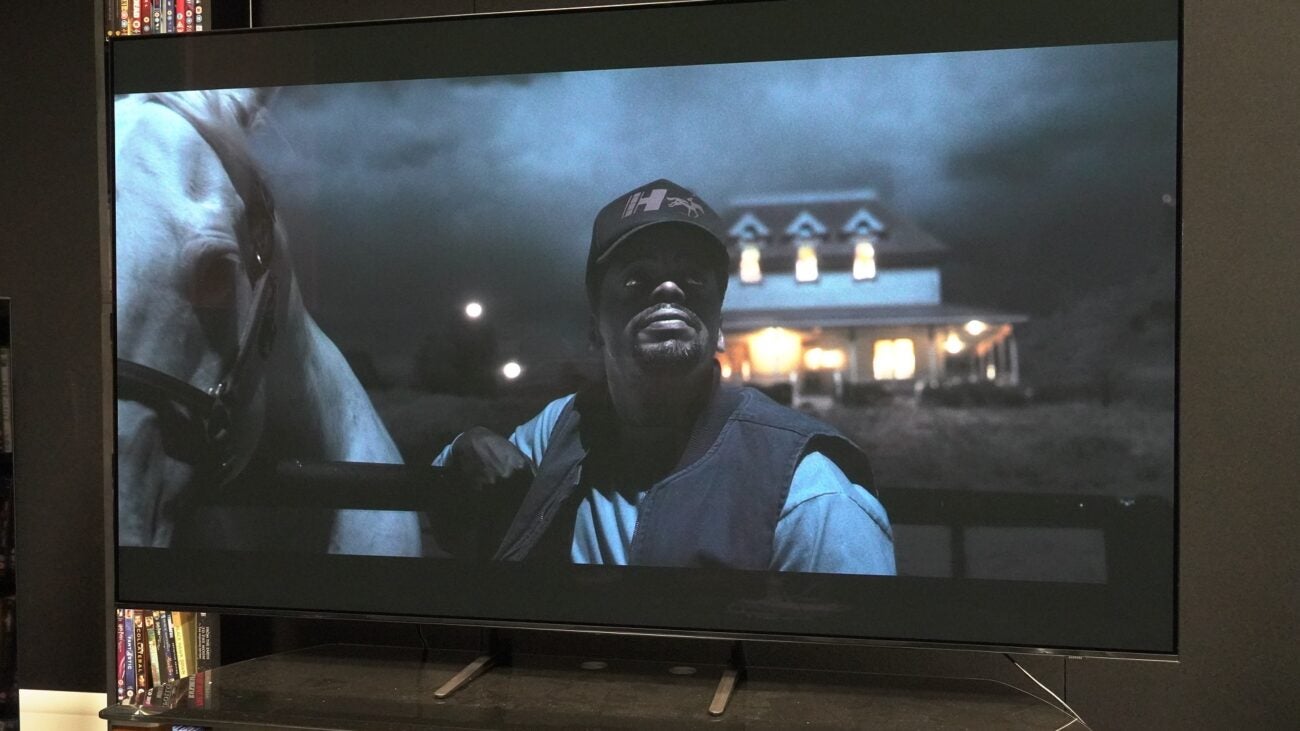

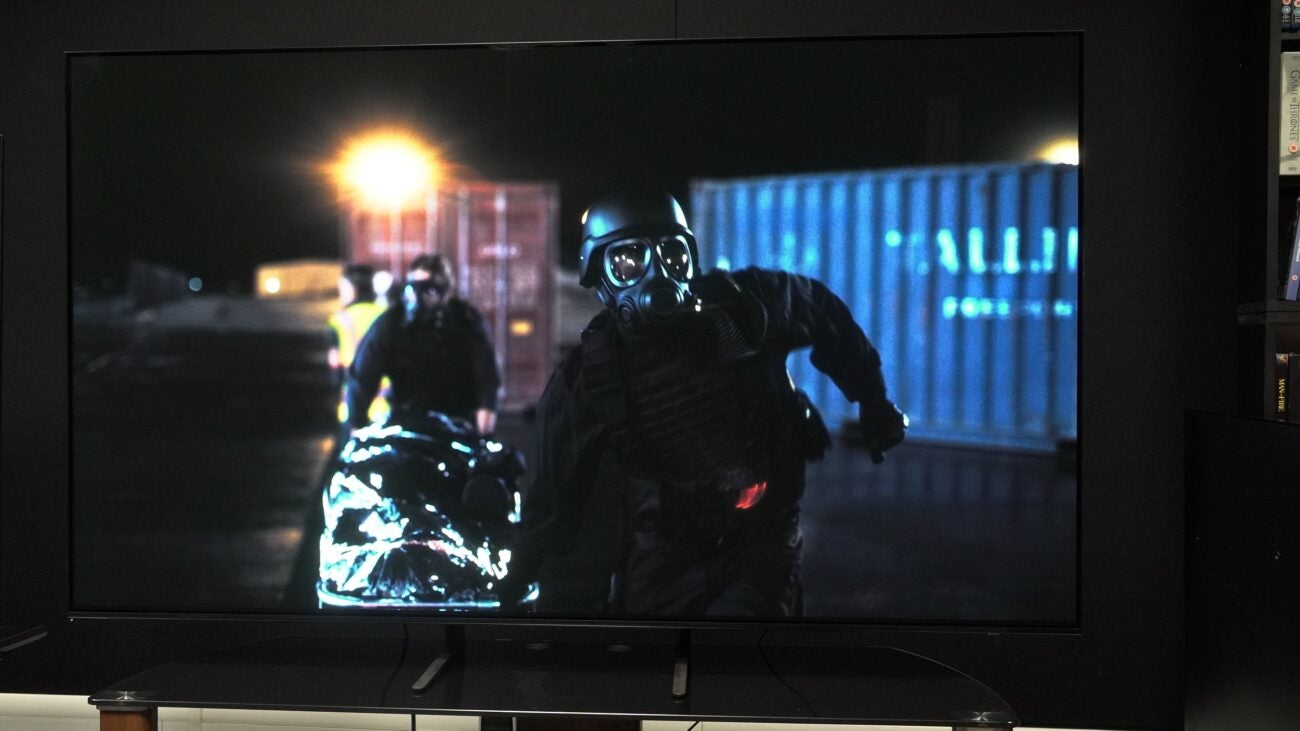

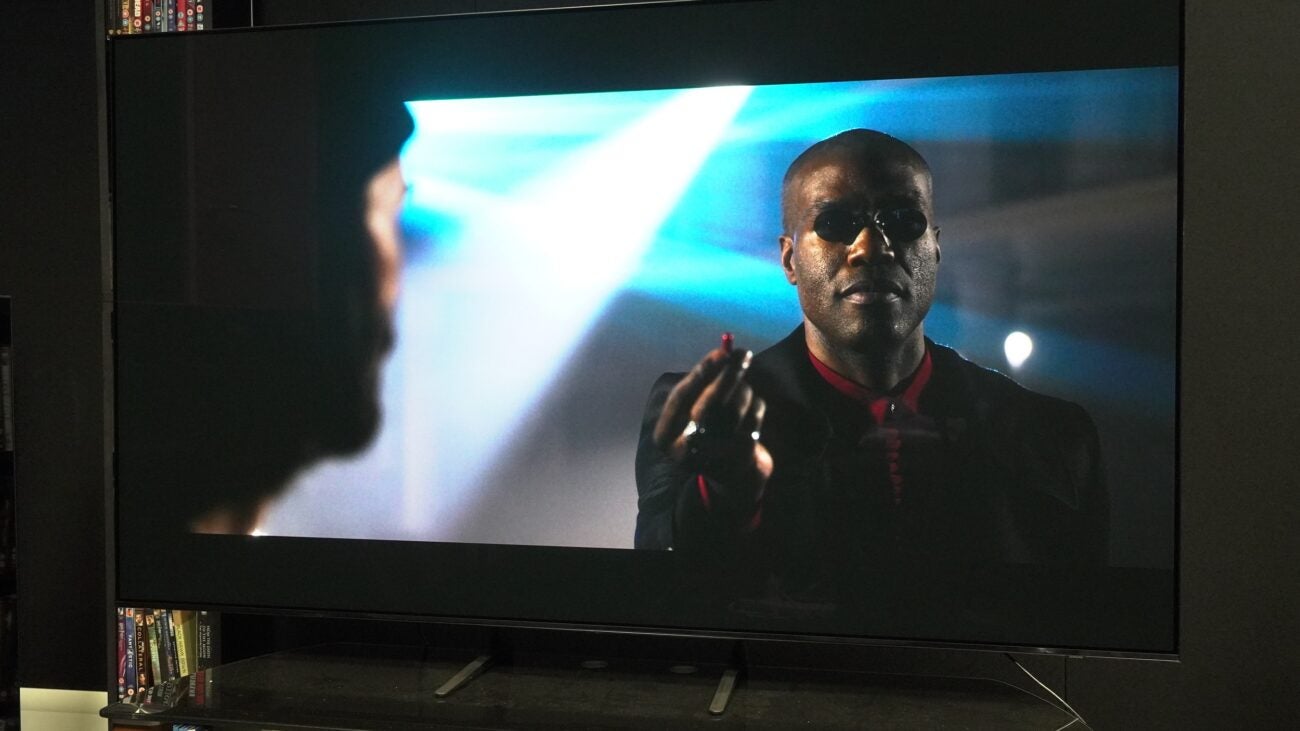
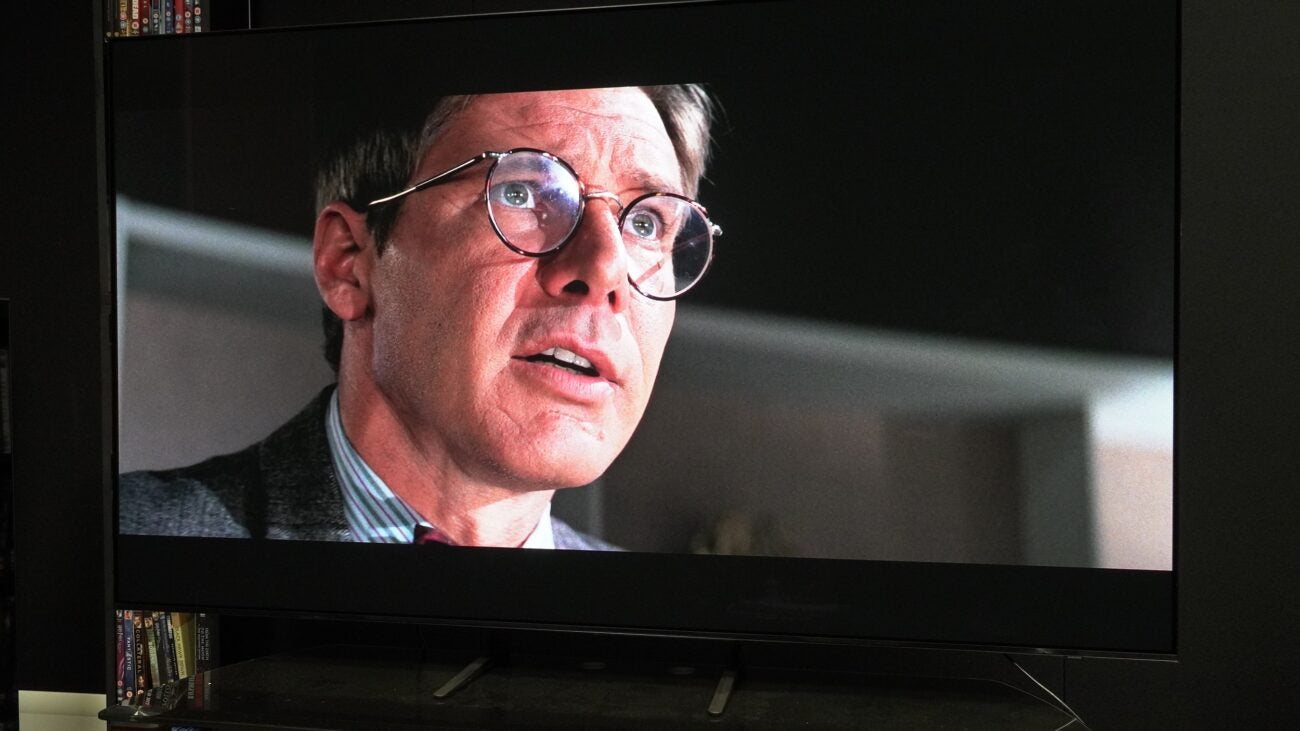

Verdict
The Samsung S90C OLED is a little underwhelming in terms of picture and sound. Though it can deliver high levels of brightness with HDR content, rivals produce a more natural and nuanced performance than Samsung’s entry-level OLED can.
Pros
- Capable of a bright HDR performance
- Fuss free set-up
- Excellent gaming performance
- More responsive smart interface
Cons
- Lacklustre audio
- Rivals capable of more nuance and subtlety with HDR content
- Red push to complexions
- Black levels look grey in bright rooms
Availability
- UKRRP: £2799
- USARRP: $2599
- EuropeRRP: €3299
- CanadaRRP: CA$3299
- AustraliaRRP: AU$4299
Key Features
- Anti-reflection screenScreen guards against distracting glare
- Motion Xcelerator Turbo ProSupports refresh rates up to 144kHz
- OLEDOLED screen with Quantum Dot colour tech
Introduction
After giving OLED TV technology the short shrift for almost a decade, Samsung can’t stop putting out new OLED models, bringing the S95C and S90C to the market in 2023.
The S95C is the premium OLED screen, while the S90C comes in below as the more affordable effort, featuring a different design, less advanced features, and lower peak brightness for HDR content.
That has me wondering whether the S90C is the 2022 S95B in disguise. The S95B was a TV I liked but had a few imperfections, and with strong competition from the likes of the LG C3, Sony A95K, and Panasonic MZ1500, the S90C has to prove its mettle in a tough market.
Design
- Laser Slim design
- Central feet instead of pedestal
- Blacks can look grey in bright rooms
The S90C looks and feels like the 2022 S95B and were it not for the difference in the stand design, it’d be exactly the same set as before.
The switch to central feet is beneficial as they’re easier to attach – simply slot them in and click them into place. The simplicity is much appreciated.
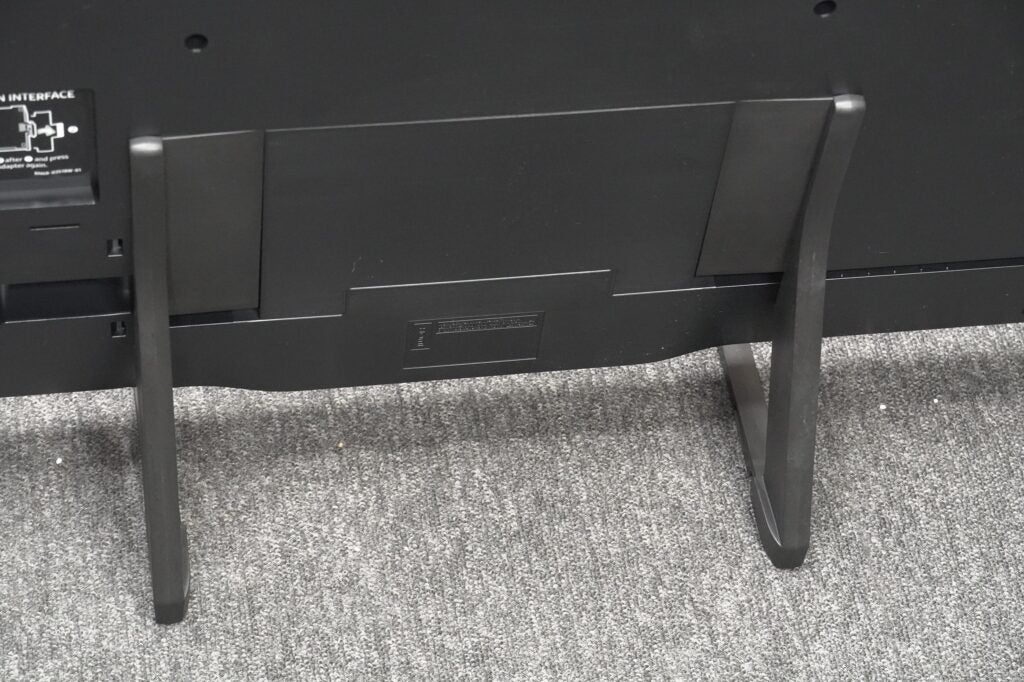
The screen itself is thin from edge to edge aside from the bulge towards the bottom of the rear panel. For those who prefer to wall-mount, the S90C won’t sit flush against the wall.
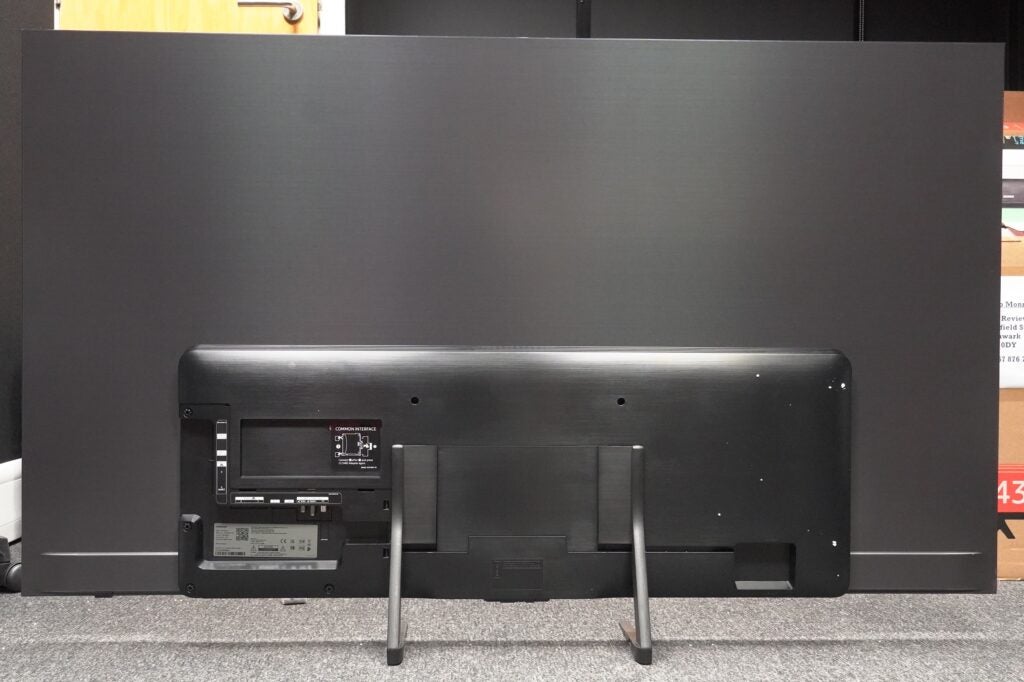
Colours retain their brightness and intensity at wider angles without losing saturation, and brightness is higher than a ‘standard’ OLED panel whether head-on or from an angle.
The S90C would be worth considering for use in bright room because of its inherent brightness (at least in its Standard picture mode) but there is a caveat. While the screen has an Anti-Reflection filter, it lacks the polarizer that other OLED displays have, so in brighter rooms blacks can look grey because. Turn the lights off and it’s not an issue but for some it’ll likely distract.
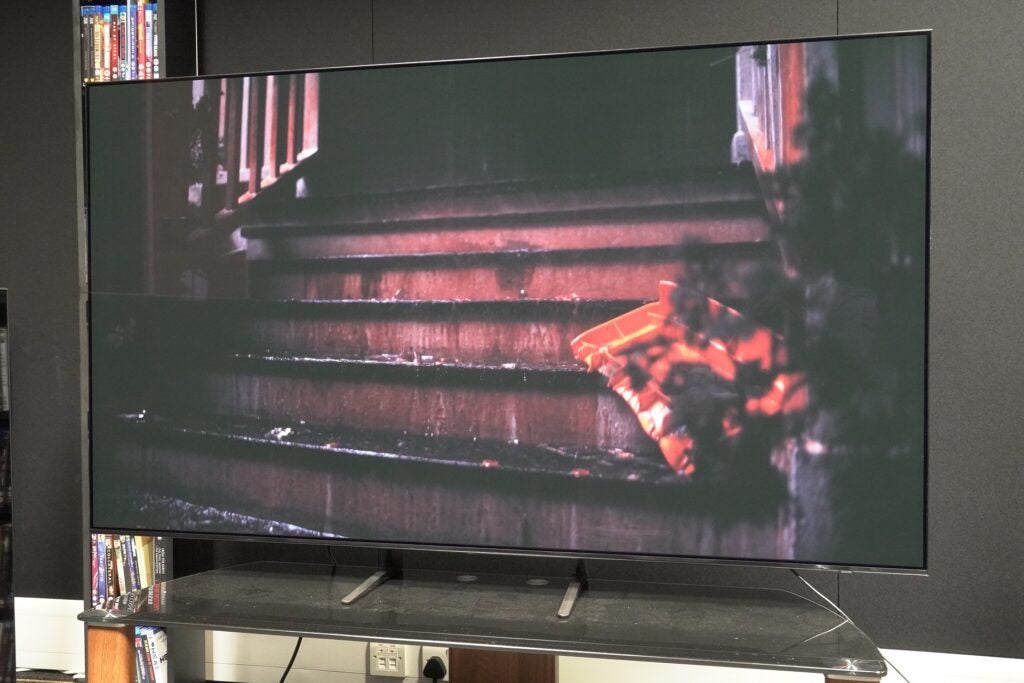
Tizen Interface
- Faster than before
- Settings still hidden away
- Wide array of entertainment apps
The user experience across Samsung’s 2022 screens was sluggish, with features and settings hidden from view. The 2023 version is an improvement on the first point, but less so on the latter.
It is faster in terms of speed, especially at power up. The interface is divided into hubs for Search, Ambient, Game and Media, as well as rows for ‘Connected Devices’ and ‘Settings’. Flicking through the hubs is swift enough. The latter two sections feel disconnected from the rest though, hidden away in a shelf towards the bottom of the screen. You wouldn’t notice them unless you knew they were there.
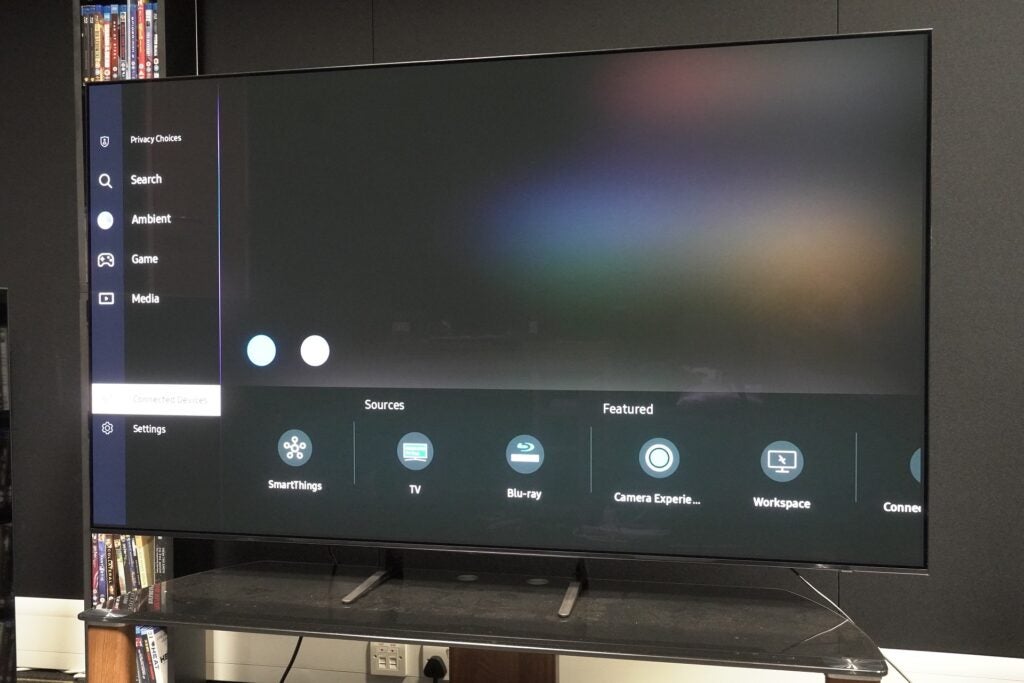
Users are well served by Tizen’s entertainment options. Despite the lack of Freeview Play all the main UK catch-up and on-demand apps are provided. The main video and music streaming apps are covered from Netflix, Prime Video, Disney+ to Spotify, Tidal, Qobuz, Apple Music and more. Apple TV+ supports HDR10+ compatibility to further optimise the HDR performance for the S90C.
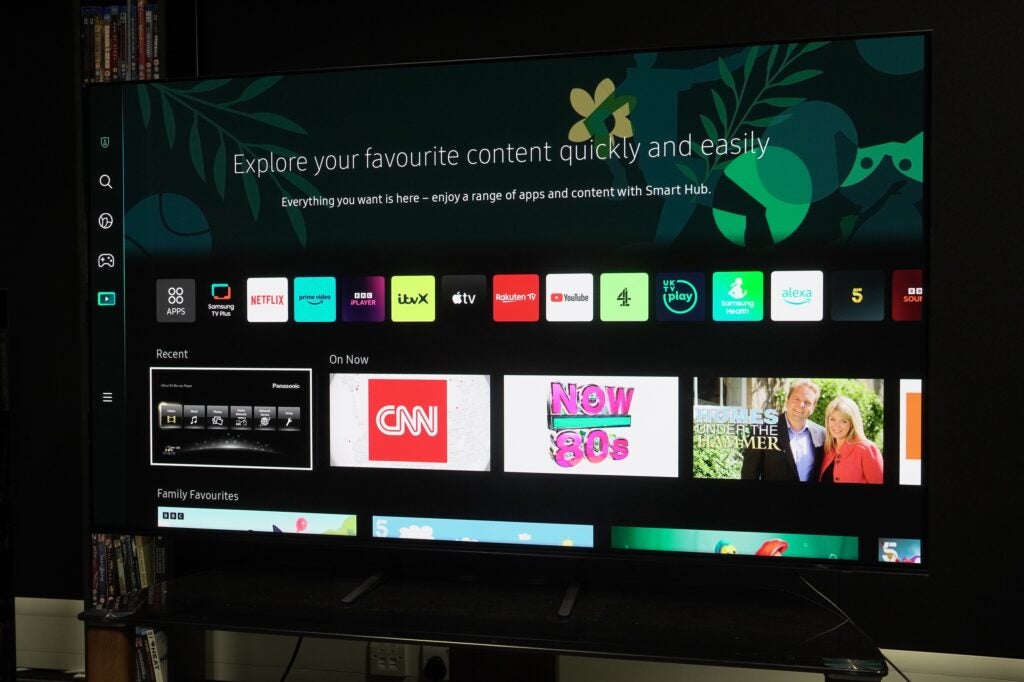
The paid apps are complemented by Samsung TV Plus, a free-to-access streaming service with hundreds (if not thousands) of movies and TV programmes available. There are more free-to-access goodies from the likes of Plex too.
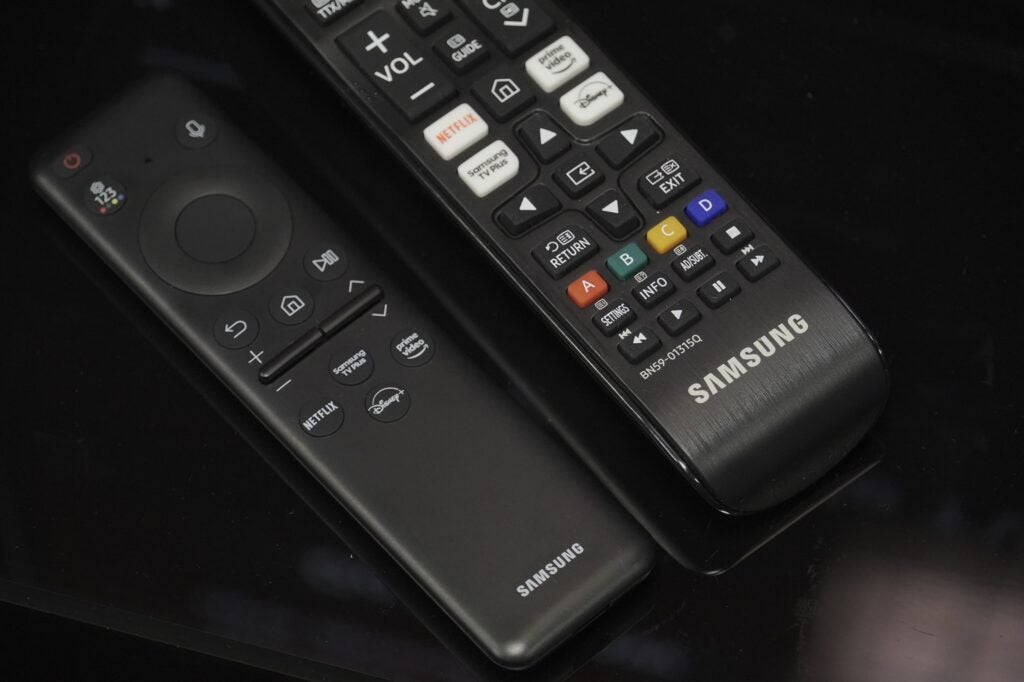
There’s a choice of two remotes. A smart, minimalist one with few buttons that can charge itself through ambient light (or via a USB-C port). The standard, more functional remote has a lot more buttons. Neither is a chore to use though most will likely prefer the smart remote for its simplicity, although both have quick access buttons to popular streaming apps.
Features
- Excellent gaming performance
- Four HDMI 2.1 inputs
- Cloud gaming built-in to Game Hub
The Gaming Hub features cloud gaming apps with the likes of Xbox Game Pass, Amazon Luna, Utomik, and GeForce Now onboard.

PC gamers get features such as AMD FreeSync Premium VRR, and while the S90C can handle Nvidia G-Sync, it’s not certified for it, so issues may be encountered. Super Ultra Wide Game View supports screen ratios of 21:9 and 32:9 to view more of the game environment. HDR10+ Gaming is supported with compatible displays/GPUs.
Auto low latency mode minimizes lag, and in game mode I measured latency at 9.2ms, which is class-leading. With HDMI VRR that can be reduced with games that feature refresh rates up to 144Hz (which the S90C supports).
The S90C doesn’t get the One Connect box, but you still get four HDMI inputs – all of which are rated to the HDMI 2.1 standard – though HDMI 1 and 4 are specified as the ‘game’ inputs. Two USB ports, Ethernet, digital optical out, CI Slot, and antennae for terrestrial and satellite providers cover your physical ports. Wi-Fi 5 and Bluetooth 5.2 are the wireless options.
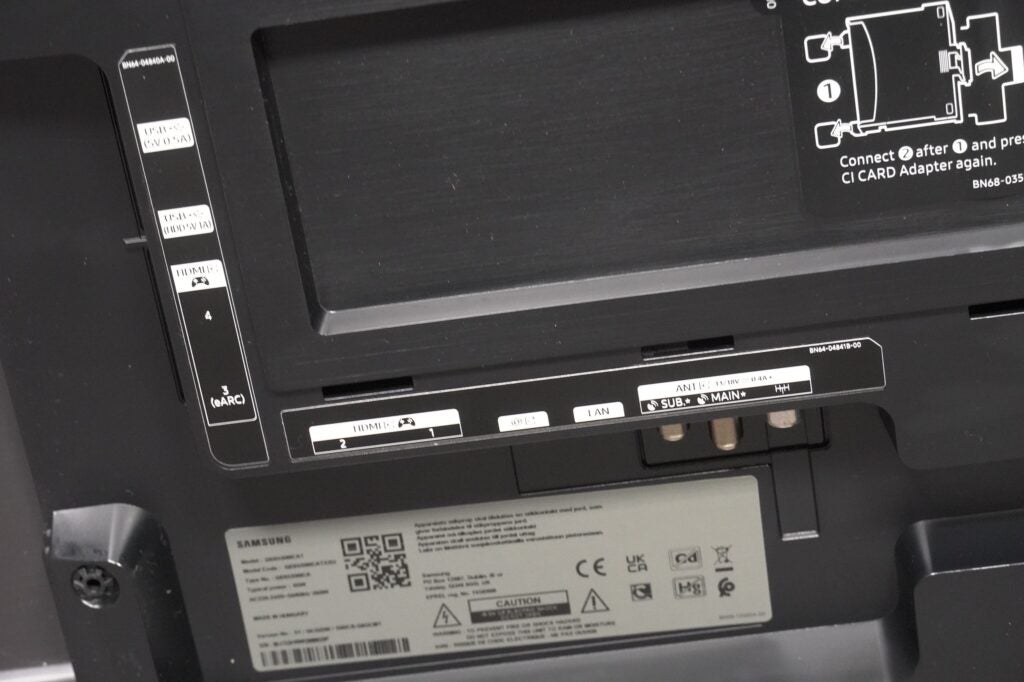
Two features I don’t recall being on Samsung’s 2022 OLEDs are the EyeComfort mode and the Pantone validation. EyeComfort mode reduces the amount of blue light emitted from the screen to reduce any irritation. Pantone support claims to produce accurate, true-to-life colours, in particular the reproduction of skin tones.
Picture Quality
- Capable of bright, colourful HDR performance
- Looks rather dull and flat in dark HDR scenes
- Not the most nuanced or subtle picture
One of the main criticisms I had about the S95B was a colour performance that was in need of more finessing across its various modes. A lot of tweaking was needed to get a representative picture, but allied with its high brightness HDR, Samsung’s first OLED presented a solid foundation.
The S90C appears to be the same screen as the S95B though brightness in various modes has been tweaked. In Standard mode, the S90C hits a high of 1038 nits on a 5% window (1033 on the S95B) but Filmmaker drops from 1017 to 720 nits, and Movie mode is up from 500 to 886 nits.
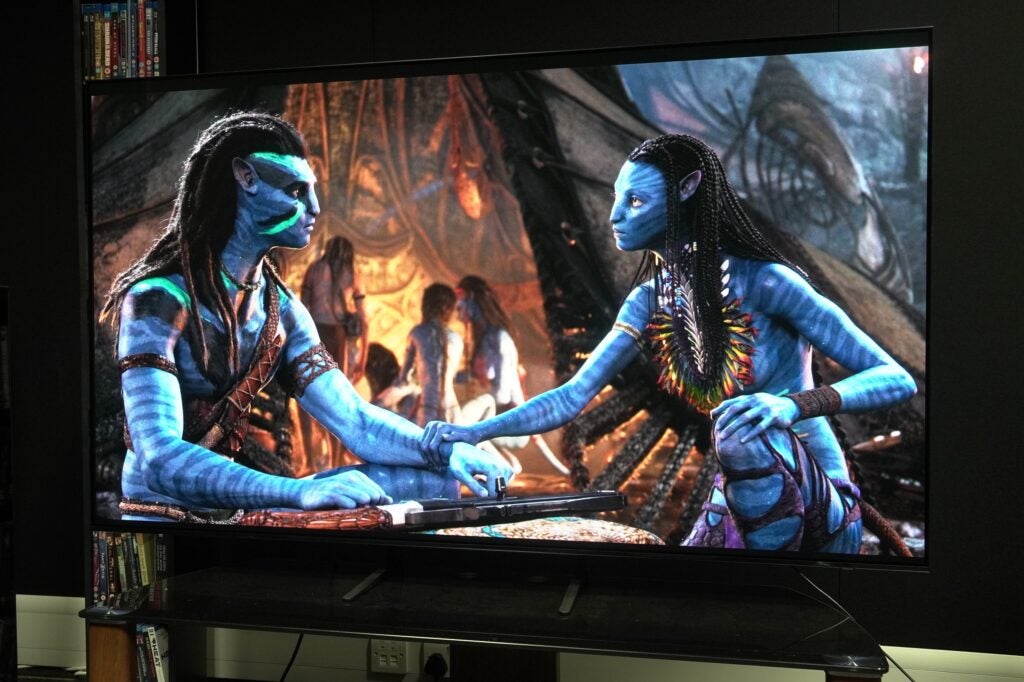
The S90C packs a punch with its bright, colourful, images, but it’s not quite job done. There are still a number of niggles about the S90C’s picture.
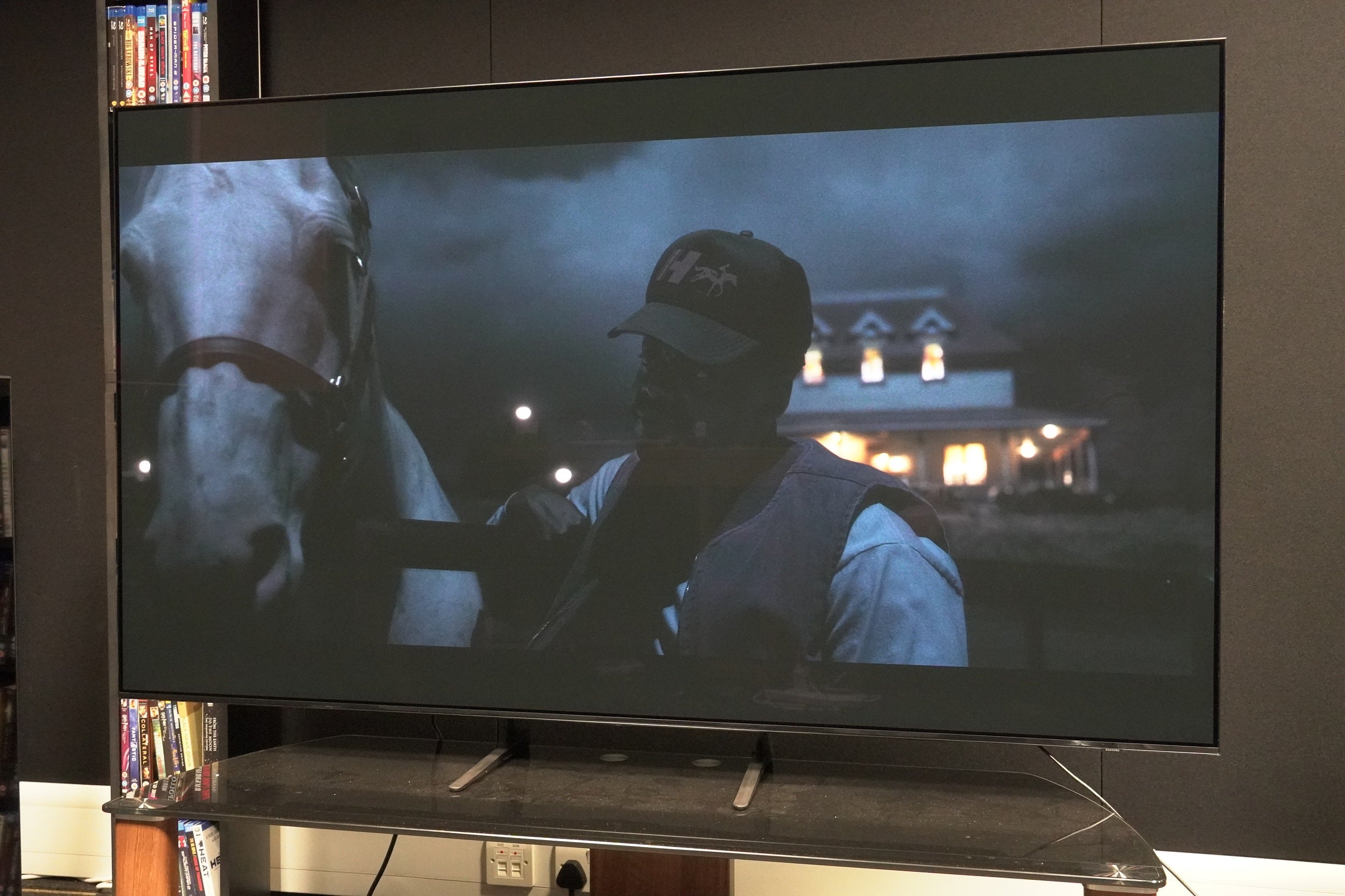
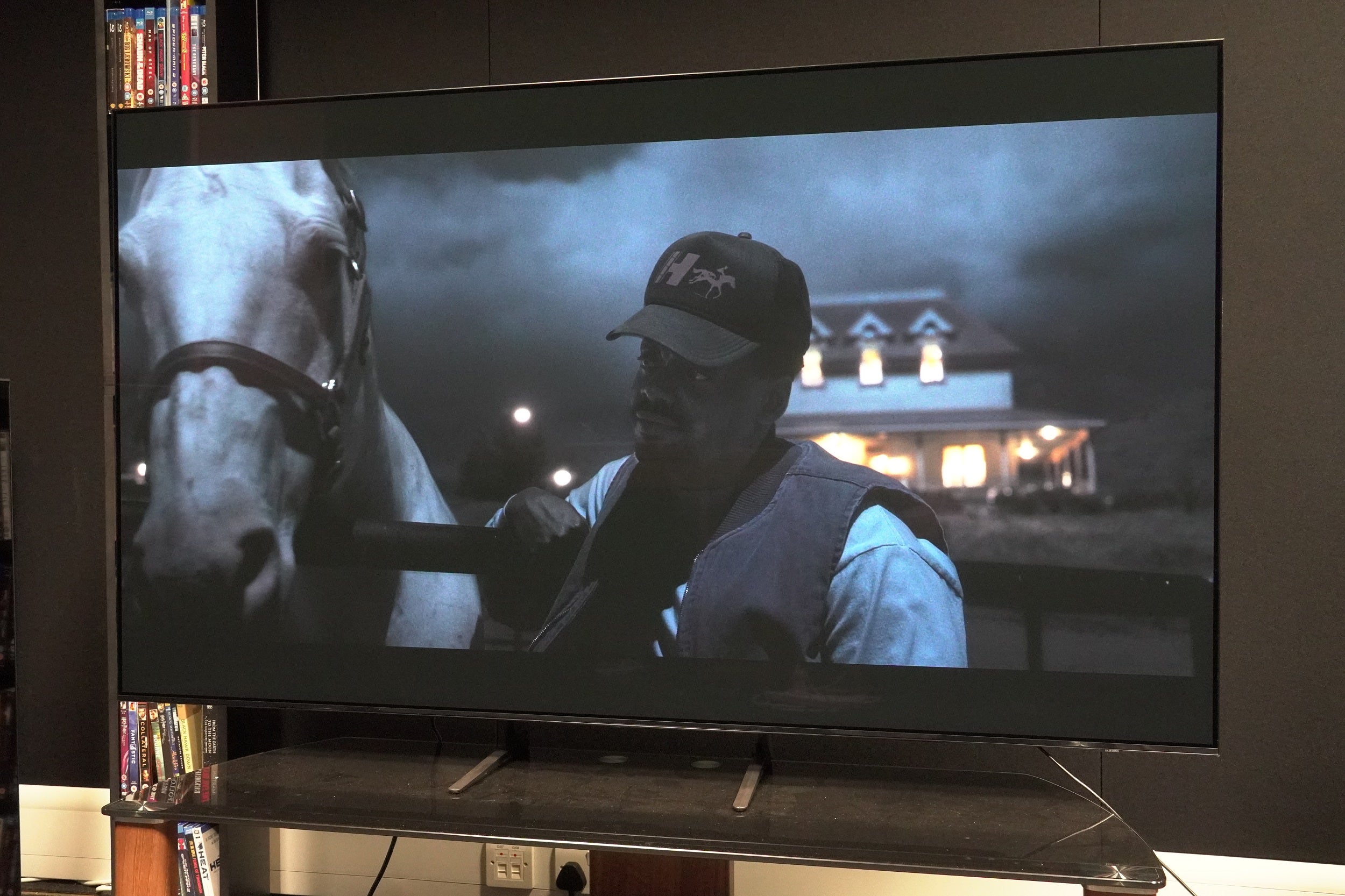
One is that out-of-the-box brightness is surprisingly dark with HDR content. Watching Jordan Peele’s Nope I found it harder to see detail in the scenes set at night.
Playing with the Contrast Enhancer brings brightness to expected levels, but it’s not the solution for every film. With Interstellar (4K Blu-ray, HDR10) leaving Contrast Enhancer to ‘High’ resulted in overly bright whites, meaning some more tweaks were needed in the settings.
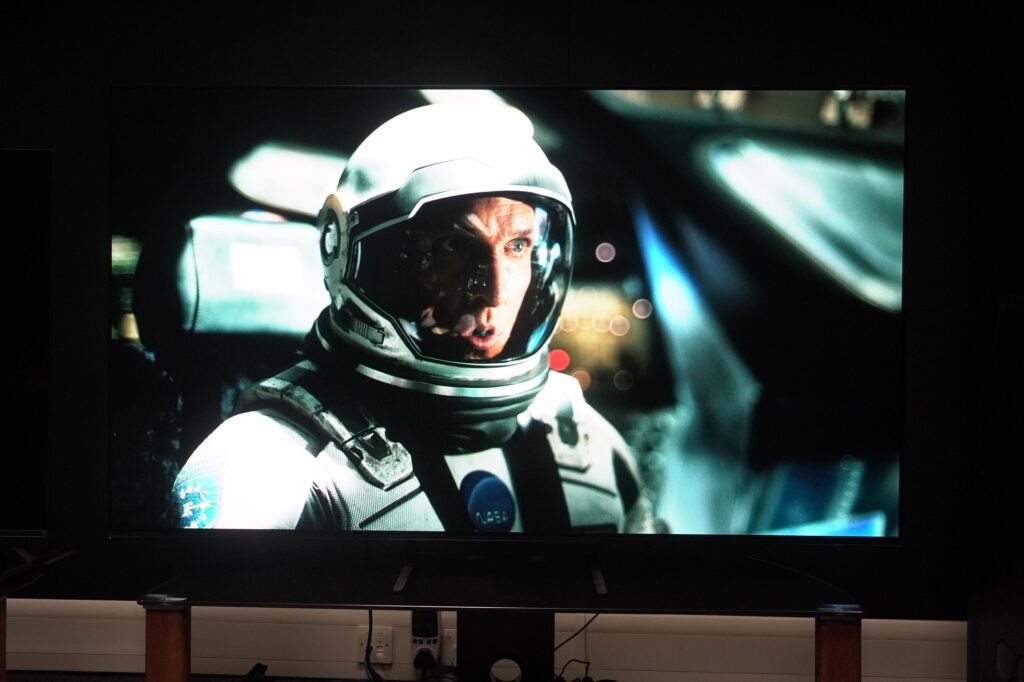
There’s also Active and Standard HDR settings in picture modes other than Filmmaker (where this setting is locked). Watching Marvel’s Secret Invasion on the S90C and Sony A80L and though the S90C is the brighter of the two, the A80L picks out more detail in the brighter parts of daytime-set scenes. Switching from Standard to Active (or fiddling with the Contrast Enhancer) and the Samsung suffers from clipping (loss of detail) in the brightest areas.
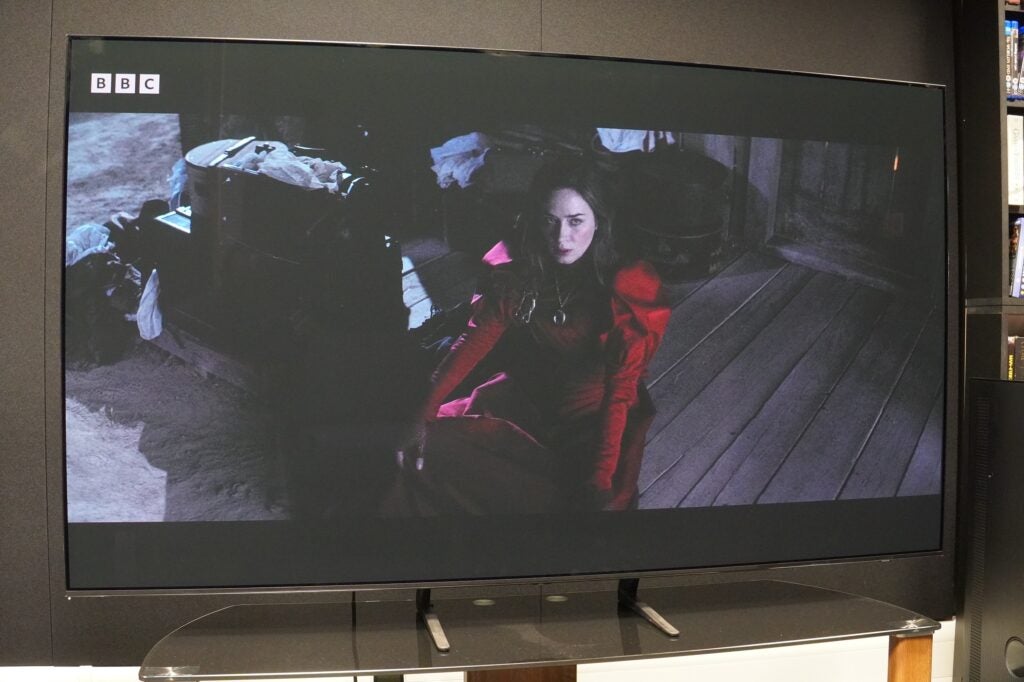
But it is with dark HDR scenes which the S90C struggles to articulate. Colours appear colder and a little duller, and black levels lack depth in both The English (iPlayer, HLG) and Secret Invasion (Disney+, HDR10). There’s just an overall lack of punch to colours and a coldness to complexions in dark HDR scenes.
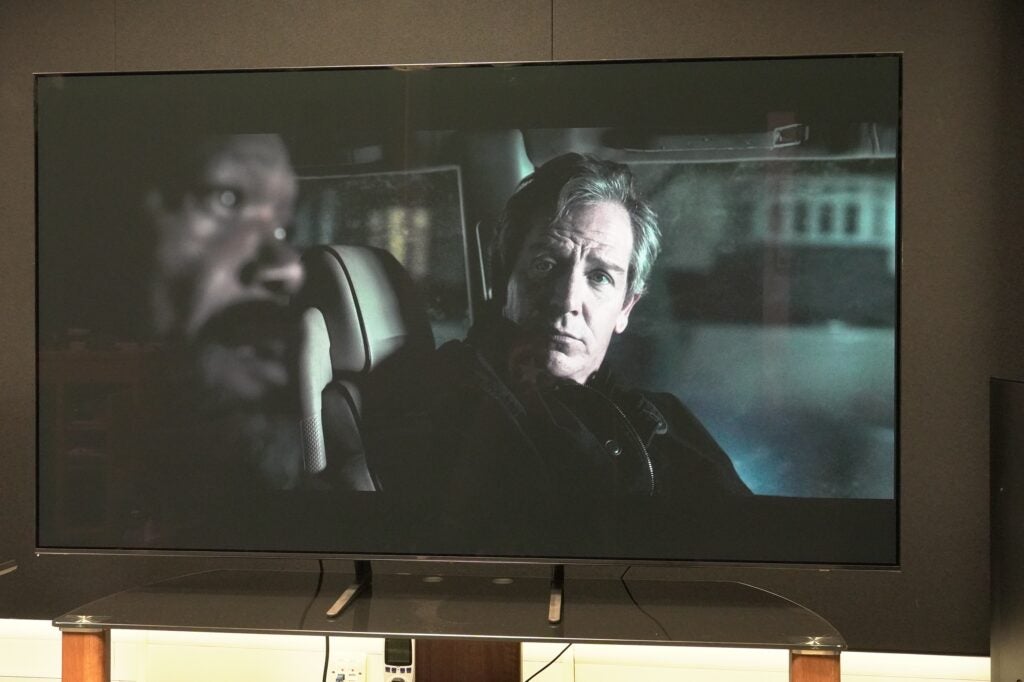
Pitted against either the Sony A95K or A80L the QD-OLED’s red push is more noticeable on the S90C than the A95K. Both Sony TVs exhibit a more natural depiction of colours and complexions, with the S90C not as subtle in how it shades characters’ faces, especially in those darker HDR scenes, which come across as a tad heavy.
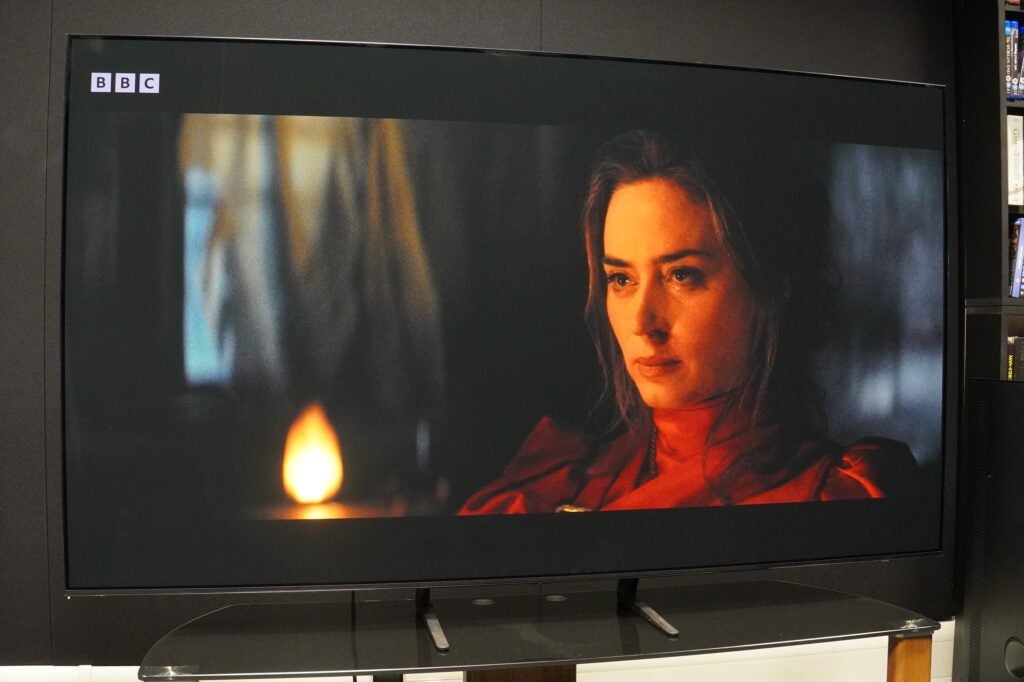
Motion processing is an area for improvement. There’s judder with hands and feet in World War I drama 1917, with distracting noise around the bodies of characters and the equipment they carry. With the slow camera pans the S90C performs fine, but with faster movement there’s stutter and noise, and this is in both Custom and Auto modes.
In The English there’s a scene where a group of horses gallop across the screen, and there’s a distracting amount noise and pixelation around the horses’ legs. File under ‘ok’ but ought to be better.
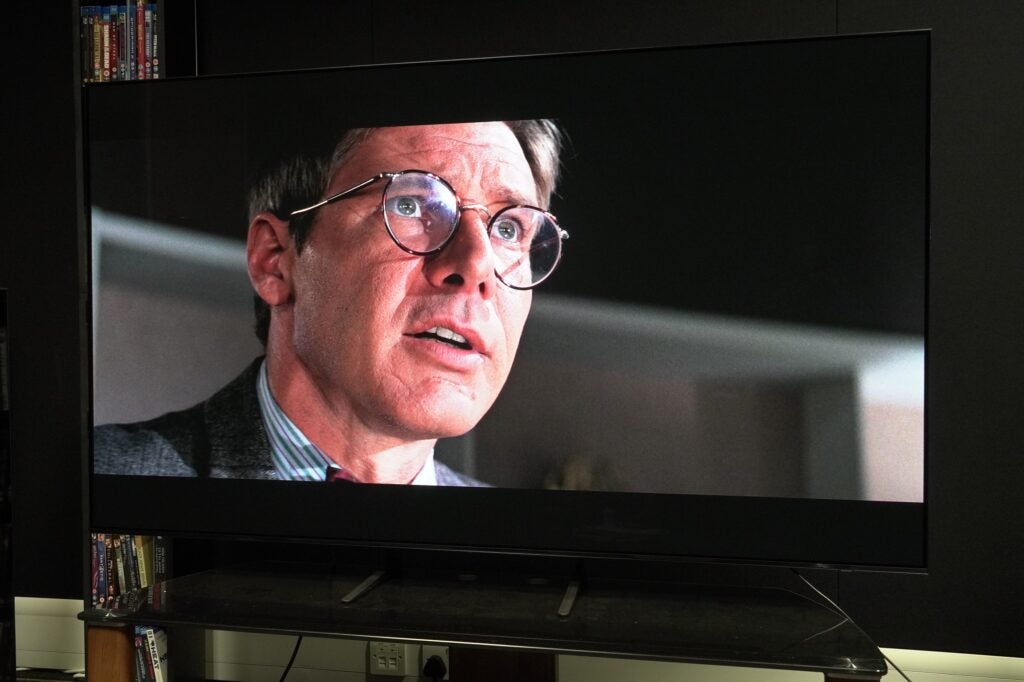
With Samsung’s Neural Quantum Processor handling upscaling duties, a Blu-ray of Indiana Jones and the Last Crusade looks filmic, nicely sharp, and clear. Fine detail is excellent, the S95C brings out the textures of the film’s costuming, and film grain is treated organically and not confused as noise. Colours are wide-ranging, blacks have depth and detail in the faces of actors is very good. If I have a quibble, it’s the complexion of characters errs towards red.
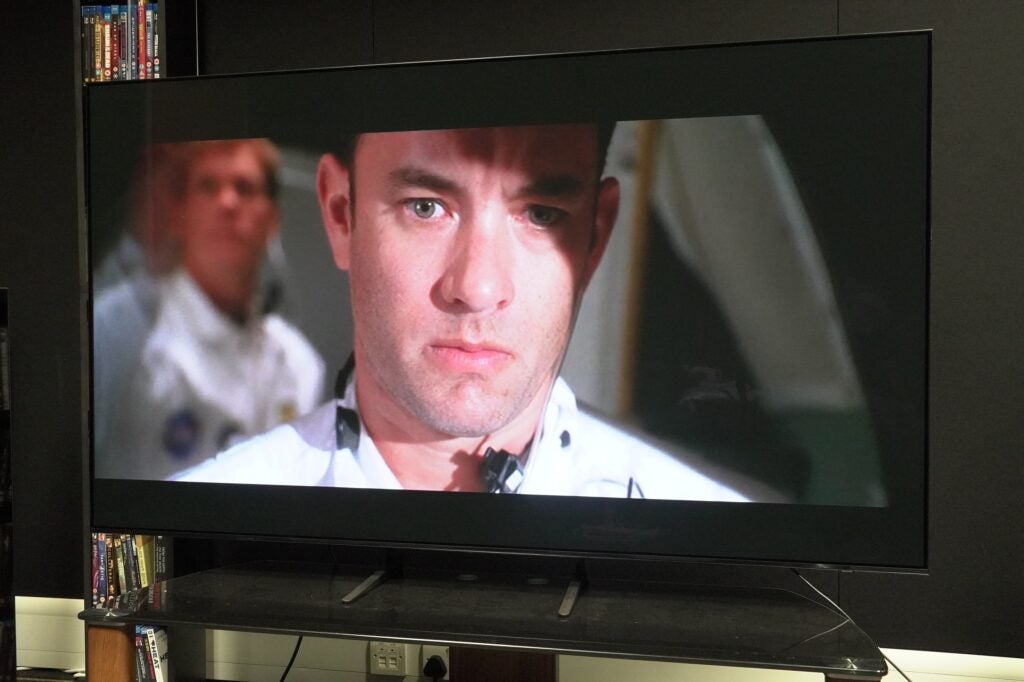
A DVD of Apollo 13 looks much better than expected on a 65-inch TV. The picture can be noisy but not overly so, with edges that are soft and lack the clarity and detail of HD content. Colours look natural for the most part aside from the red push to complexions. While I wouldn’t want to watch much, if any 480p content on this TV, it’s far from unwatchable.
Sound Quality
- Lacks impact
- OTS tracking system is barely noticeable
The S90C’s built-in audio system is not as powerful as the S95B, which carried a 60W 2.2.2 channel system. I pegged the S95B’s power output at 40W during review, but I must have been mistaken.
The S90C drops to a 40W powered 2.1 system and is downgraded from the S95B’s OTS (Object Tracking Sound) system that featured ‘physical’ speakers around the screen, to OTS Lite which uses a combination of physical and virtual speakers.
It amounts to a performance that’s less impactful than I found the S95B to be. Despite its Dolby Atmos support, Top Gun: Maverick sounds tame and uneventful, with not much dynamism evident where Maverick goes on a test run. Though the film is described in spacious terms, it’s not exciting.
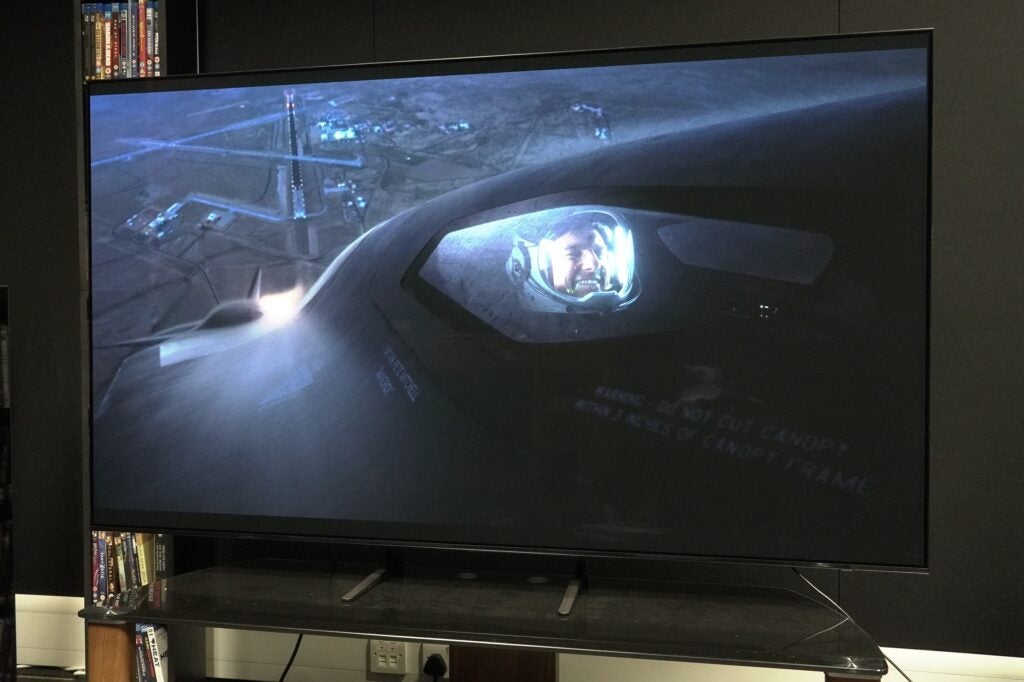
Bass is ok but lacks that oomph and punch as the jets whizz across the sky. Disappointingly, there’s still buzzing with low frequencies (volume 50) that’s evident going in and out of settings menus, and surprisingly with the Netflix and Apple TV+ logos.
There’s a choice of two audio modes: Standard and Amplify, and the latter grants more energy, intensity, and boosts dialogue, which is positioned well on screen, delivered clearly and crisply. Of the two, it’s the mode that gets the most out of the TV’s sound system.
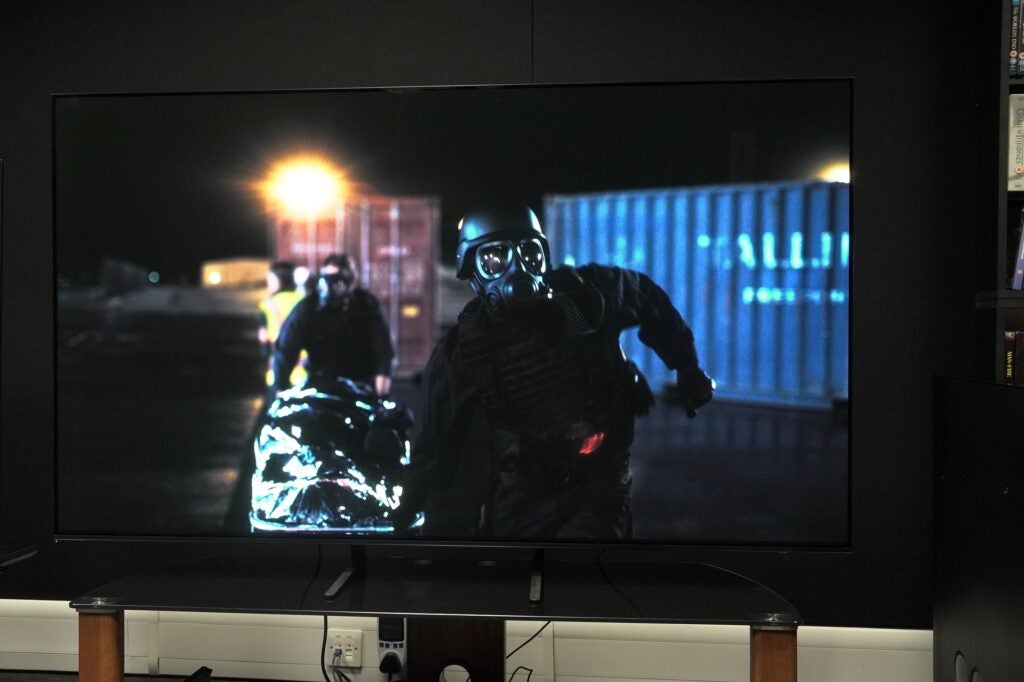
The sense of the speakers tracking sounds from one corner to another mostly escapes me. With a film such as Tenet, the action scenes sound a little too safe, as if the TV is performing within itself. Add a soundbar and the excitement, weight, and intensity of the action sequences come flooding through. I’d recommend budgeting for a soundbar.
Latest deals
Should you buy it?
If you’re after high-end gaming: With support for refresh rates up to 144Hz, fast input lag and a selection of features for PC gamers, the S90C comes with excellent gaming credentials.
There are others with better picture and sound: Though the Sony A80L isn’t as bright, it’s a more natural and filmic performer with HDR content than the S90C, especially with darker scenes.
Final Thoughts
The Samsung QE65S90C is a puzzle. It’s capable of great brightness for an OLED but that potential is only unleashed with a visit to the settings.
The HDR performance out of the box is underwhelming unless the Contrast Setting is activated, its performance in dark scenes is not the most engaging, and the audio performance is flat and lacks excitement.
At the time of review it had an RRP of £2799 but it can be found for £1999 at some retailers. However, if picture and audio are pressing priorities, the Sony A80L is the better performer.
How we test
We test every television we review thoroughly over an extended period of time. We use industry standard tests to compare features properly. We’ll always tell you what we find. We never, ever, accept money to review a product.
Find out more about how we test in our ethics policy.
Tested for a month
Tested with real world use
Benchmarked with tests
FAQs
In the UK there’s a choice of the S90C and S92C at various retailers, and the difference appears to be cosmetic with the stand taking on a different colour. Otherwise the TVs are








